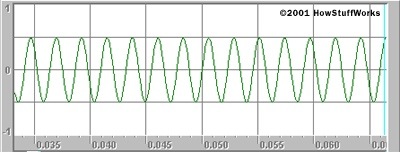The first, foremost and most important of all of the 20 Universal Laws is the Law of Harmony.
(Message To Eagle). This is also similar to one of the 7 Cosmic Laws of Hermes Trismegistos, called “The Principle of Harmony and Balance”, which states,
‘Harmony is the flow of life. Everything strives for harmony, for balance. The stronger determines the weaker and makes it equal to itself.’
Energy and Vibration
Everything around you is energy, including your thoughts and feelings. For example, empaths can intuitively feel and perceive other people’s emotions and feelings without the other person saying a word. These energies create vibrations that are either harmonious or disharmonious with the Universe and can not only affect you, but the people you come in contact with.
Perhaps this explains why the mainstream media and most governments try to keep us living in a perpetual state of fear? When we live in fear, we can be easily controlled.
Negative Emotions
Negative emotions, such as fear, jealousy and envy, will keep you living in a state of disharmony and create blockages which in turn, will bring repetitive cycles of negative emotions and experiences until you can finally release whatever disharmonious emotion or experience that is attached to you.
For example, when we get angry at someone, it usually isn’t something we personally dislike within that person, but more likely, it is something that we fear within ourselves.
This provides us an OPPORTUNITY to overcome this fear or negative emotion through self-reflection while helping us on our spiritual progressions.
The full article about this is available on Message To Eagle
Harmonics And The Law Of Harmony and Attraction
written by The Mystica Research Team
April 13, 2014
All 20 Universal Laws are linked to the first law. And for those to which these ideas seem just mere “esoteric stuff” utterly unscientific, we will try to explain how much they’re actually linked to scientific facts and show that maybe the ancients had better knowledge about the construction of this universe because their approach was different and more humble than the approach of modern science.
Most people do not actually understand what “harmony” really is.
It is true that sending love and light into the world around you will bring positive energy back to you and that negative energy will ultimately turn your personal universe towards negativity. This will influence everybody around you and finally build a chain of positive or negative realities of which you are a basic part. But this sounds very much like the Law of Attraction, which is the last of all laws. It seems that the first and the last law are linked in a particular way, as if a circle were closing at this point. Why is this?
There’s in fact a physical law behind what’s called harmony. It is a simple fact and is being used in scientific reality every day. The law refers to any kind of vibration, as harmony actually is something that comes with frequency.
Frequency is the number of occurrences of a repeating event per unit time:
The period is the duration of one cycle in a repeating event, so the period is the reciprocal of the frequency. For example, if a newborn baby’s heart beats at a frequency of 120 times a minute, its period (the interval between beats) is half a second. (Wikipedia).
For periodic waves in nondispersive media (that is, media in which the wave speed is independent of frequency), frequency has an inverse relationship to the wavelength, λ (lambda). Even in dispersive media, the frequency f of a sinusoidal wave is equal to the phase velocity v of the wave divided by the wavelength λ of the wave.
Frequency of waves
In the special case of electromagnetic waves moving through a vacuum, then v = c, where c is the speed of light in a vacuum.
When waves from a monochrome source travel from one medium to another, their frequency remains the same—only their wavelength and speed change.
EXAMPLES
Light
Visible light is an electromagnetic wave, consisting of oscillating electric and magnetic fields traveling through space. The frequency of the wave determines its color: 4×1014 Hz is red light, 8×1014 Hz is violet light, and between these (in the range 4-8×1014 Hz) are all the other colors of the rainbow. An electromagnetic wave can have a frequency less than 4×1014 Hz, but it will be invisible to the human eye; such waves are called infrared (IR) radiation. At even lower frequency, the wave is called a microwave, and at still lower frequencies it is called a radio wave. Likewise, an electromagnetic wave can have a frequency higher than 8×1014 Hz, but it will be invisible to the human eye; such waves are called ultraviolet (UV) radiation. Even higher-frequency waves are called X-rays, and higher still are gamma rays.
All of these waves, from the lowest-frequency radio waves to the highest-frequency gamma rays, are fundamentally the same, and they are all called electromagnetic radiation. They all travel through a vacuum at the same speed (the speed of light), giving them wavelengths inversely proportional to their frequencies. In dispersive media, such as glass, the speed depends somewhat on frequency, so the wavelength is not quite inversely proportional to frequency.
Sound
Sound propagates as mechanical vibration waves of pressure and displacement, in air or other substances. Frequency is the property of sound that most determines pitch.[3]
The frequencies an ear can hear are limited to a specific range of frequencies. The audible frequency range for humans is typically given as being between about 20 Hz and 20,000 Hz (20 kHz), though the high frequency limit usually reduces with age. Other species have different hearing ranges. For example, some dog breeds can perceive vibrations up to 60,000 Hz.[4]
In many media, such as air, the speed of sound is approximately independent of frequency, so the wavelength of the sound waves (distance between repetitions) is approximately inversely proportional to frequency.
Now imagine that what generates the frequency is the chord of a violin.
The frequency of this chord will depend on its length. When you pass the bow on the chord, it will vibrate with the given frequency, let’s say 440 Hertz. This corresponds to the tone A (LA). When you know put your finger on the chord dividing it in two exact halves, it will still give you an A, but now with the double number of events per seconds – 880 Hertz. In musics, the difference between the two tones is called an “octave”: the eigth step of the 8-step-tone-scale. We have now basically created a mathematical relation, the relation of 1:2.
If we change the position of our finger on the chord in a special way, we will get other tones of the same scale. These tones have unavoidably to vibrate in a harmonic relation to our basic tone, otherwise we will produce a concert that everybody runs away from!
This happens because every tone, or every vibration in nature, comes with its proper harmonics. We do not hear these harmonics, but their presence defines our feeling and hearing. We’re unable to listen with pleasure to a piece of music that uses all frequencies, without caring about their harmonics.
The mathematical reality behind these harmonics looks like this: a frequency comes with its harmonics that vibrate in the relation of 1:2 (ocatve), 1:3 (fifth), 1:4 (third)… etc.
This is true for every single frequency in this universe. From this law depends also what we call “resonance”: only what vibrates in a harmonic way with a given frequency, will resonate with it.
Resonance occurs when a system is able to store and easily transfer energy between two or more different storage modes (such as kinetic energy and potential energy in the case of a pendulum). However, there are some losses from cycle to cycle, called damping. When damping is small, the resonant frequency is approximately equal to the natural frequency of the system, which is a frequency of unforced vibrations. Some systems have multiple, distinct, resonant frequencies. (Wikipedia)
If now we apply this law to every single vibration in the universe, assuming that everything in the universe is bascially vibration, we get a slight understanding of why it could be that our personal attitude, feelings, thoughts and actions actually create the universe around us. The Law of Harmony is probably part of the Law of Creation. It is the perceibavble effect of an underlying logic on which the universe was created.
The Law of Attraction is nothing but the Law of Resonance, which is basically the consequence of the harmony we create.
These are the bases. We have been able to use these facts in science. But until now, we’ve not been able to use them in our real life. We’re still being loaded with negative inputs, and this is where manipulation starts. Consciousness is not dreaming ourselves away after having personally evolved. Consciousness means also understanding the very bases of what creates the world around us. We consider it therefore indispensable to try to make people aware of these basics to show them how important and real their proper attitudes, thoughts and actions are – and how important it is not to get trapped in the web of negative information they’ve been feeding is with for ages.





Pingback: 13 Spiritual Laws that Govern the Universe, Whether We Choose to Accept Them Or Not – Awareness Act
Pingback: 13 Spiritual Laws that Govern the Universe, Whether We Choose to Accept Them Or Not | RWC News
Pingback: Let there be Light!
Nice article. I find it interesting and Educating. Am a Fan.